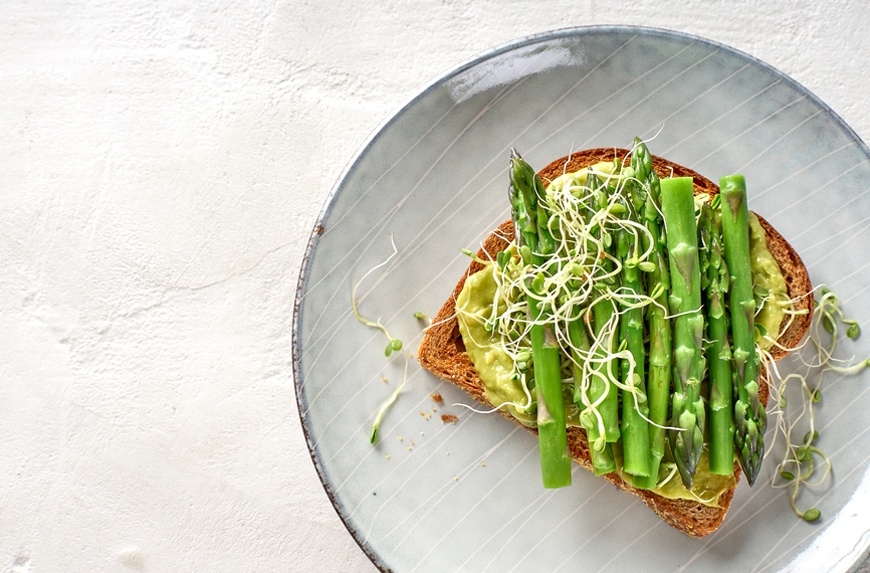The Beginner’s Guide to the DASH Diet
Though it's not as hyped up as some other diets, it's also got a lot fewer rules and restrictions than most. Oh, and it works. The eating plan has been ranked high on the US News & World Reports list several times since 2011, even claiming the top spot in 2017. The reason why MDs love it so much is that it's super effective in preventing high cholesterol, high blood pressure, and obesity. (DASH stands for Dietary Approaches to Stopping Hypertension, FYI.)
Okay, so I know what you're thinking: My blood pressure and cholesterol are totally fine. Pass the butter coffee! But according to chef Jessica Swift, RD, the diet's simple, healthy eating practices—like cutting back on processed foods and lowering your sodium intake—could be helpful for anyone. (Including those with depression, according to a new study.)
"This is a good practice for those looking to be proactive in regard to hypertension," she says. If you're under 40, this might not seem like a high priority. But considering that the hospitalization rate for strokes in women ages 18-34 rose 31.8 percent from 2003 to 2012, keeping tabs on your blood pressure and cholesterol levels is a lot more important than you'd think.

{{post.sponsorText}}
Here, Swift shares everything you need to know about implementing the DASH diet—quite possibly the most accessible food philosophy you've never heard of.
Scroll down for your DASH diet starter kit.

How to know if the DASH diet may be right for you
If you're someone who can't be bothered with counting your macros, strategically timing your meals, or giving up entire food groups, the DASH diet will likely sound as refreshing as a tall glass of coconut-rose kefir. Very few whole foods are off-limits, and there aren't a lot of rules to follow. "This diet includes an abundance of fruit, vegetables, and whole grains, while limiting refined foods, simple sugars, and high-fat foods—especially saturated fats," says Swift. "It's a healthy way of low-sodium eating."
The National Heart, Lung, and Blood Institute (NHLBI) recommends that the average person on the DASH diet eats just two to three daily servings of fats and oils, with a focus on monounsaturated fats—think nuts, avocados, and olive oil. (Sorry, coconut oil fans—since it's high in saturated fat, you'll want to consume it in moderation if you're DASHing.) You should also strive to eat less than five sweets per week and under 2,300 mg of sodium per day.
The hard and fast rules for grains, dairy, and meat
As for what you can eat? The NHLBI recommends six to eight servings of whole grains per day, four to five servings of fruits and veggies, fewer than six servings of animal protein, and two to three servings of low- or non-fat dairy products. Sound familiar? The DASH diet has a lot in common with the Mediterranean diet, another MD and dietitian fave.
If you do decide to give DASH a try, Swift says you should first clean out your pantry. "I would start by going through your cabinets and getting rid of anything processed, high in salt, and high in sugar," she says. "Watch for hidden salts and sugars [in foods] that may be perceived as 'healthy,' such as store-bought marinades, seasoning blends, bread, and sauces." (You'll also want to limit eating out, since it's usually impossible to know how much sugar or sodium is in restaurant food.)
Where fiber comes in
Instead of trashing the goods, grab a baggie and consider donating them to a local food bank. Then, replace those items with lots of fresh produce, low-fat dairy products, fiber-rich carbohydrates (think quinoa and sweet potatoes), and lean meats and fish. Swift also recommends eating the peels of fresh produce, like apples, pears, and potatoes, to increase your fiber intake. A high-fiber diet is linked to lowering inflammation and is good for gut health, making it an important component of reaping the benefits of the DASH diet.
Yes, this advice runs counter to much of the low-carb, high-fat, non-dairy dietary wisdom we're used to hearing today. But the research doesn't lie—study after study has linked the DASH diet with positive health outcomes. That said, food affects every person differently, so it's important to listen to your body and go with what feels right for you. And in this case, if whole-grain pasta and skim-milk lattes make you feel like your best self, no one's stopping you from digging in.
Originally published April 27, 2018. Updated December 30, 2019.
If your overall health goal is reducing inflammation, watch the video below for some tips:
The Mediterranean diet is another plan that consistently wins high praise—for instance, did you know it can strengthen your bones and slow down the aging process? Spaghetti FTW!
Loading More Posts...